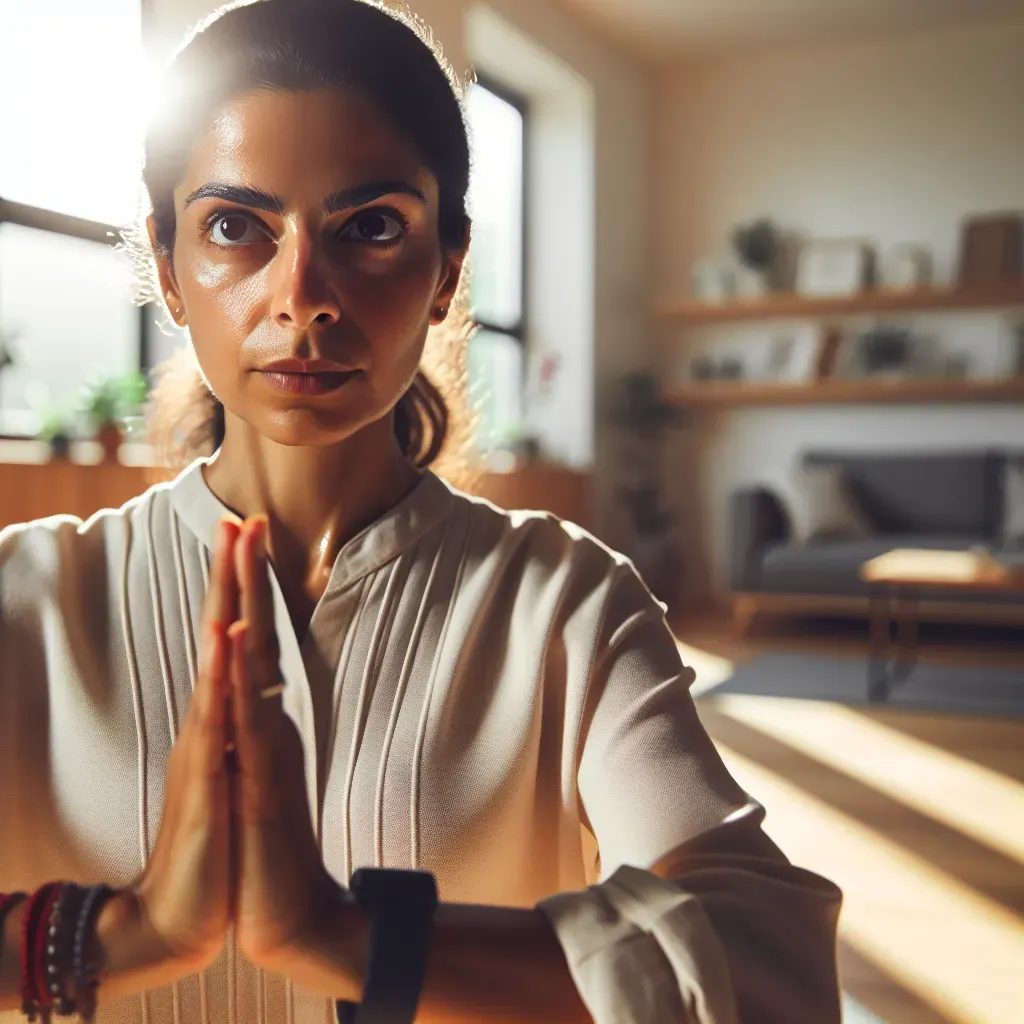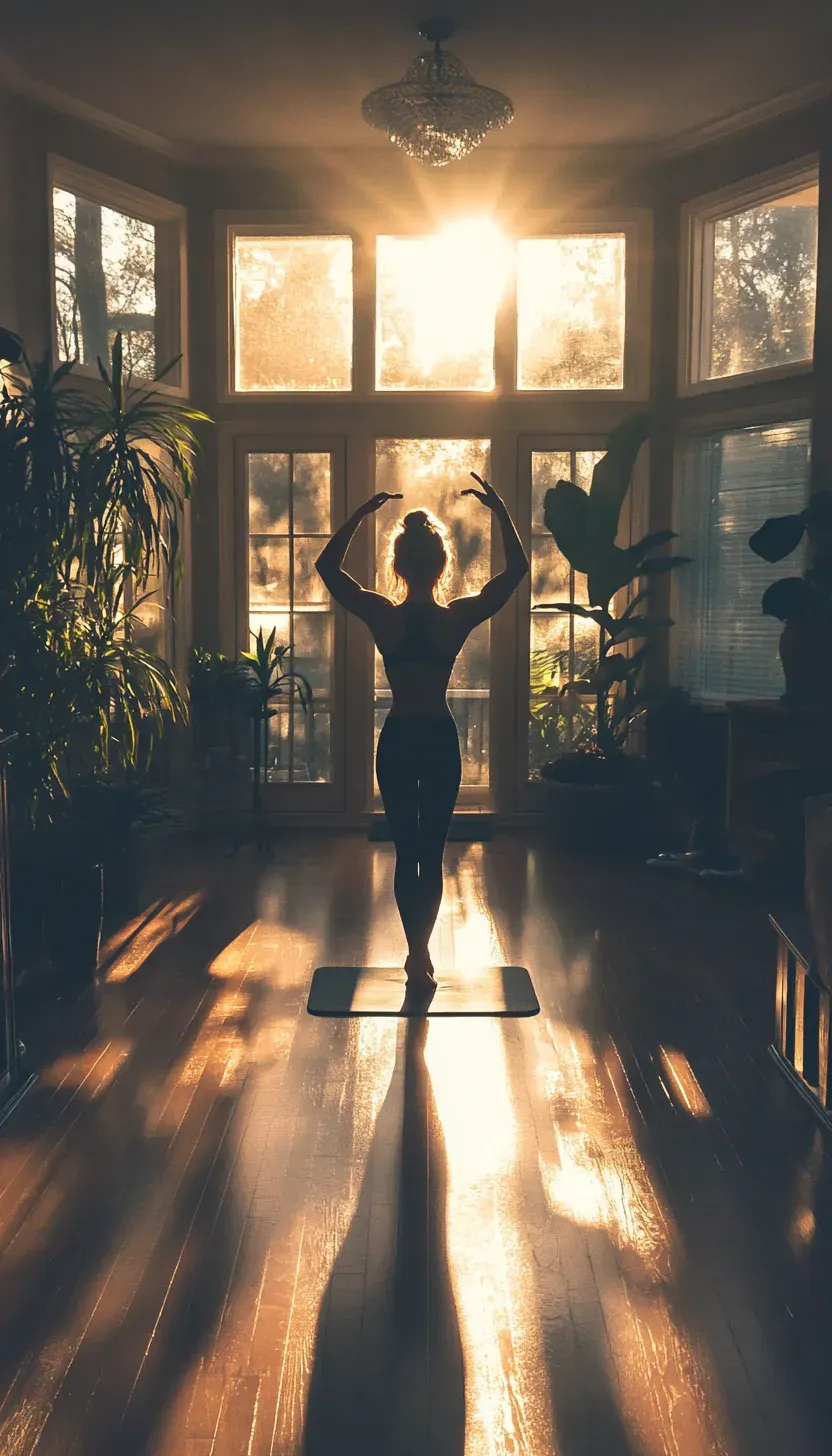Basic Yoga Poses For Better Sleep: Relaxing Asanas For Bedtime
"Struggling with sleepless nights? Discover the soothing power of bedtime yoga to transform restless tossing into blissful slumber. Uncover the calming poses and practices that will help you bid adieu to insomnia and greet each morning refreshed and rejuvenated.
In our modern world, where stress and anxiety often seem to be constant companions, finding the elusive path to restful sleep can feel like chasing a fleeting dream. But fear not, for amidst the chaos, there exists a sanctuary of peace and tranquillity – bedtime yoga.
You might wonder, 'Yoga? Seriously?' But trust me, the simplicity of this ancient practice holds profound potential. By embracing basic yoga poses tailored for bedtime, you're not just engaging in physical movements; you're embarking on a journey of inner exploration and restoration.
So, let's embark together on this journey. Through the gentle guidance of yoga, we'll navigate the turbulent waters of insomnia, ultimately arriving at the shores of serenity and sweet dreams. Are you ready to take the first step? Let's dive in."
Understanding The Connection Between Yoga And Sleep
Ever find yourself staring at the ceiling, mind buzzing with thoughts like a swarm of bees on a hot summer day? You're not alone. In our fast-paced world, stress and anxiety often tag along like unwanted guests, making it nearly impossible to unwind and catch some Z's. But fear not, dear reader, for the ancient practice of yoga holds the key to unlocking a peaceful night's sleep.
The Science Behind Bedtime Yoga
Yoga isn't just about striking Instagram-worthy poses or contorting your body into a human pretzel. At its core, yoga is a holistic practice that integrates breath, movement, and mindfulness to promote overall well-being. When it comes to sleep, yoga works its magic by calming the nervous system and reducing the levels of stress hormones like cortisol in the body.
Imagining Tranquility: The Impact Of Yoga On the Nervous System
Picture yourself in a crowded subway during rush hour. The noise is deafening, the air is thick with tension, and you can feel your muscles tensing up with every jostle and jolt of the train. Now, imagine stepping off that chaotic subway and into a serene yoga studio, where the only sound is the gentle rhythm of your breath and the only movement is the slow, deliberate flow of your practice. Can you feel the difference? That's the power of yoga in action.
But How Does It Help with Sleep?
Think of your nervous system as a seesaw, with the sympathetic nervous system (responsible for the fight-or-flight response) on one end and the parasympathetic nervous system (responsible for rest) on the other. In our hectic lives, it's all too easy for the seesaw to get stuck in the "fight-or-flight" position, leaving us feeling wired and exhausted at the same time. Yoga helps to rebalance the seesaw by activating the parasympathetic nervous system, signalling to your body that it's safe to relax and unwind.
Basic Yoga Poses For Better Sleep
Now that we've covered the science behind it, let's dive into some specific yoga poses that are perfect for winding down at the end of a long day.
Your Bedtime Yoga Toolbox: Poses For Serenity
Child's Pose (Balasana)
Ah, Child's Pose – the ultimate relaxation pose that feels like wrapping yourself in a cozy blanket of calm. To get into Child's Pose, start by kneeling on the floor with your big toes touching and your knees spread wide apart.
Then, exhale as you lower your torso between your thighs, reaching your arms out in front of you and resting your forehead on the mat. Close your eyes and let gravity do the work as you surrender into the pose, feeling the tension melt away from your shoulders, back, and hips.
Benefits:
- Relieves tension in the back, shoulders, and chest.
- Calms the mind and soothes frazzled nerves.
- Encourages deep, diaphragmatic breathing, which promotes relaxation.
Legs-Up-the-Wall Pose (Viparita Karani)
If you've ever spent a day on your feet, you know that feeling of heaviness and fatigue that settles into your legs like wet cement. Legs-Up-the-Wall Pose is like hitting the reset button for your lower body, allowing you to release tension and promote circulation without breaking a sweat.
Simply lie on your back with your hips close to a wall, then extend your legs upward, resting them against the wall as you relax your arms by your sides. Close your eyes and focus on the sensation of your breath moving in and out of your body, allowing any lingering stress or tension to dissolve with each exhale.
Benefits:
- Improves circulation and lymphatic drainage.
- Reduces swelling and inflammation in the legs and feet.
- Calms the nervous system and promotes relaxation
- .
Corpse Pose (Savasana)
Corpse Pose – it may sound morbid, but trust me, there's nothing grim about this deeply restorative pose. Savasana is the cherry on top of any yoga practice, offering a sweet surrender into stillness that allows you to integrate the benefits of your practice and prepare for deep, rejuvenating sleep.
To practice Savasana, simply lie on your back with your arms and legs comfortably spread apart, palms facing up. Close your eyes and allow your body to sink into the mat, releasing any remaining tension with each breath. Stay here for as long as you like, savouring the sensation of relaxation washing over you like a gentle wave.
Benefits:
- Relaxes the body and calms the mind.
- Reduces muscle tension and fatigue.
- Improves concentration and mental clarity.
Forward Fold (Uttanasana)
In our modern world of constant stimulation and sensory overload, it's all too easy for our minds to get stuck in overdrive, like a car engine revving at full throttle. Forward Fold offers a much-needed opportunity to hit the brakes and shift into a lower gear, allowing you to slow down and reconnect with the present moment.
To practice the Forward Fold, stand tall with your feet hip-width apart, then exhale as you hinge forward at the hips, folding your torso over your legs and letting your head hang heavy.
You can keep a slight bend in your knees if your hamstrings are tight, and you can place your hands on the floor or grab onto opposite elbows for a deeper stretch. Close your eyes and focus on the sensation of your breath moving in and out of your body, allowing any tension or tightness to dissolve with each exhale.
Benefits:
- Releases tension in the hamstrings, lower back, and neck.
- Calms the mind and relieves stress and anxiety.
- Improves digestion and soothes the nervous system.
Cat-Cow Stretch (Marjaryasana-Bitilasana)
Ever notice how your cat instinctively stretches and arches its back after a long nap, as if to shake off the cobwebs and greet the day with renewed energy? Cat-Cow Stretch taps into that same primal instinct, inviting you to move your spine in a fluid, rhythmic motion that helps to release tension and increase flexibility.
To practice Cat-Cow Stretch, start on your hands and knees with your wrists directly under your shoulders and your knees directly under your hips. Inhale as you arch your back and lift your tailbone and chest toward the ceiling, allowing your belly to sink toward the floor (Cow Pose).
Then, exhale as you round your spine and tuck your chin toward your chest, drawing your belly button toward your spine (Cat Pose). Continue flowing between these two poses, synchronizing your breath with your movement and allowing your spine to move freely and fluidly.
Benefits:
- Increases flexibility and mobility in the spine.
- Releases tension in the back, neck, and shoulders.
- Stimulates the digestive organs and massages the internal organs.
Tips For Practicing Yoga Before Bedtime
Now that you've got a handful of relaxing yoga poses in your toolkit, it's time to put them to use and reap the sweet rewards of better sleep. But before you roll out your yoga mat and dive in, here are a few tips to help you make the most of your bedtime yoga practice:
Crafting Your Bedtime Ritual: Tips For A Restful Practice
Creating a Calming Environment
Think of your bedroom as your sanctuary – a sacred space where you can retreat from the chaos of the outside world and reconnect with your inner sense of peace and tranquillity.
Set the mood for relaxation by dimming the lights, lighting a few candles, and playing some soothing music or nature sounds. You can also incorporate other sensory cues like essential oils or a cozy blanket to enhance the overall atmosphere of serenity and calm.
Setting Intentions for Relaxation
Before you begin your yoga practice, take a moment to set an intention for your practice – a specific quality or feeling that you want to cultivate, such as peace, relaxation, or gratitude.
By anchoring your practice with a clear intention, you can focus your energy and attention on aligning your actions with your desired outcome, making it easier to let go of distractions and enter into a state of deep relaxation.
Harnessing Intention: Setting Your Bedtime Agenda
Breath Awareness During Poses
The breath is like a bridge that connects the body and mind, allowing you to synchronize your physical movements with your mental state and cultivate a sense of presence and awareness in the present moment.
Throughout your yoga practice, pay close attention to the quality and rhythm of your breath, allowing it to guide you deeper into each pose and anchor you in the here and now. By cultivating breath awareness, you can tap into the restorative power of the breath and use it as a tool for relaxation and stress relief.
Breathe Deep, Sleep Deep: The Power Of Breath In Yoga
Gentle Stretching and Movements
When it comes to bedtime yoga, less is often more. Instead of pushing yourself to the edge of your flexibility or strength, focus on gentle stretching and movements that feel nourishing and supportive for your body.
Listen to your body's cues and honour its needs, modifying poses as needed to accommodate any physical limitations or areas of tightness or discomfort. Remember, the goal of bedtime yoga isn't to achieve a perfect pose or impress anyone – it's simply to relax and unwind, so be kind and compassionate to yourself as you move through your practice.
Gentle Embrace: Nourishing Your Body Through Yoga
Avoiding Stimulating Poses or Sequences
While a vigorous vinyasa flow might be just what you need to kickstart your day with energy and enthusiasm, it's probably not the best choice for winding down before bedtime. Instead, opt for gentle, restorative poses that encourage relaxation and soothe the nervous system, such as the ones we've explored in this article.
Avoid poses that require a lot of effort or exertion, as well as any poses that make you feel agitated or uncomfortable. Remember, the goal is to create a sense of ease and comfort in both body and mind, so choose poses that support that intention and leave the rest for another time.
Steering Clear Of Restlessness: Choosing The Right Poses
Restful Nights Ahead: Embracing The Power Of Bedtime Yoga
Feeling like you've tried everything under the moon to catch some decent shut-eye, yet still finding yourself tossing and turning like a ship lost at sea? Hey, we've all been there.
The frustration of sleepless nights can weigh heavy on your mind, leaving you feeling exhausted and defeated before the day even begins. But fear not, weary traveller, for there's a beacon of hope shining brightly on the horizon – bedtime yoga.
Now, you might be thinking, "Yoga? Seriously? How is contorting my body into pretzel-like shapes supposed to help me sleep better?" Trust me, I get it. It sounds a little out there, like trying to use a feather to stop a runaway freight train.
But sometimes, the simplest solutions are the most powerful, and when it comes to promoting relaxation and preparing your body and mind for sleep, yoga is the real MVP.
So, here's the deal: by incorporating basic yoga poses into your bedtime routine, you're not just stretching and strengthening your body – you're also giving yourself the gift of peace, tranquillity, and deep, restorative sleep.
Picture it: sinking into Child's Pose after a long day, feeling the tension melt away from your shoulders like snowflakes in the sun. Or reclining into a Legs-Up-the-Wall Pose, feeling the weight of the world lift off your legs as you surrender into blissful relaxation.
But the benefits of bedtime yoga go far beyond physical relaxation. By connecting with your breath and tuning into the present moment, you're also permitting yourself to let go of the worries and stresses of the day, creating space for peace, clarity, and inner calm to take root and flourish.
And as you drift off into dreamland, guided by the gentle rhythm of your breath, you'll awaken to a new day feeling refreshed, rejuvenated, and ready to take on the world.
So, my dear friend, as you bid farewell to this article and embark on your journey toward restful nights and sweet dreams, remember this: the power to sleep soundly lies within you, waiting to be unlocked and unleashed with the gentle touch of yoga.
So roll out your mat, dim the lights, and let the magic of bedtime yoga guide you into a state of deep relaxation and peaceful slumber. You've got this. And together, we'll turn those sleepless nights into distant memories, as you embrace the transformative power of bedtime yoga and awaken to a life filled with rest, rejuvenation, and radiant well-being.
Embracing Serenity: Let Bedtime Yoga Be Your Guide
"Embark on your journey to restful nights and sweet dreams with bedtime yoga as your trusted companion. As you surrender to the gentle embrace of each pose, feel the weight of the day melt away, leaving you ready to awaken to a life filled with radiant well-being and blissful slumber.
So, my dear friend, as you bid farewell to this article and embark on your journey toward restful nights and sweet dreams, remember this: the power to sleep soundly lies within you, waiting to be unlocked and unleashed with the gentle touch of yoga.
So roll out your mat, dim the lights, and let the magic of bedtime yoga guide you into a state of deep relaxation and peaceful slumber. You've got this. And together, we'll turn those sleepless nights into distant memories, as you embrace the transformative power of bedtime yoga and awaken to a life filled with rest, rejuvenation, and radiant well-being."
People Also Asked
What is bedtime yoga?
Bedtime yoga involves practising gentle yoga poses and relaxation techniques specifically designed to promote better sleep and relaxation.
How does bedtime yoga help with sleep?
Bedtime yoga calms the nervous system, reduces stress hormones, and promotes relaxation, making it easier to unwind and prepare for a restful night's sleep.
When is the best time to practice bedtime yoga?
Ideally, practice bedtime yoga about 30 minutes to an hour before going to bed to allow your body and mind to relax fully.
Do I need to be flexible to do bedtime yoga?
No, bedtime yoga focuses more on gentle stretching and relaxation rather than flexibility. Poses can be modified to suit your comfort level.
Can bedtime yoga help with insomnia?
Yes, bedtime yoga can be beneficial for insomnia by promoting relaxation and reducing anxiety, making it easier to fall asleep and stay asleep.
How long should a bedtime yoga session last?
A bedtime yoga session can vary in length, but even just 10-15 minutes of gentle stretching and relaxation can be effective in preparing your body and mind for sleep.
Are there any specific poses that are best for bedtime yoga?
Yes, poses like Child's Pose, Legs-Up-the-Wall Pose, Corpse Pose, Forward Fold, and Cat-Cow Stretch are especially beneficial for promoting relaxation and better sleep.
Can I practice bedtime yoga if I have injuries or health concerns?
It's essential to listen to your body and avoid any poses that exacerbate existing injuries or health conditions. Consult with a healthcare professional or a certified yoga instructor for personalized guidance.
Do I need any special equipment for bedtime yoga?
No, you don't need any special equipment for bedtime yoga. A yoga mat and comfortable clothing are all you need to get started.
How long will it take to see results from bedtime yoga?
Results can vary, but many people notice improvements in sleep quality and relaxation after just a few consistent sessions of bedtime yoga. Continued practice can lead to more significant and long-lasting benefits.





